Here at Expert Photography, we know how essential lenses are to photography. So to help you get started, we’re going to take a look at the different types of camera lenses. We’ll show you which types of lenses are available and how to use them. [ExpertPhotography is supported by readers. Product links on ExpertPhotography are referral links. If you use one of these and buy something, we make a little bit of money. Need more info? See how it all works here.]
The Basics of All Lens Types
Photography is all about light. The camera needs the light from the scene to make an image. And the camera lens channels the light in the right direction, bringing it to the film strip or digital sensor. The camera lens directs the light and determines how much passes through. This is partly done through the aperture setting. But also, the different types of lenses have a wider or narrower field of view. It means they see more or less of the scene in front of you. The glass elements direct the light to a single point in front of the camera sensor or film. This is called the focal point. And from the focal point, we can determine the lens’s focal length. The focal length is the distance between the focal point and the sensor. For a 50mm prime lens, the focal point is 50mm in front of the sensor. The focal length helps us categorize lens types. A shorter focal length, like 28mm, gives us a wide angle of view. A higher number, such as 200mm, gives us a narrower angle of view but greater magnification.
Prime and Zoom Lenses
Prime and zoom are both umbrella categories for lenses. The prime or zoom label denotes how the lens functions rather than what lens it is. A prime lens has a fixed focal length. They have fewer moving parts than zoom lenses, making them lighter and cheaper. And prime lenses often have a wider maximum aperture. The downside is that they’re less versatile and you might have to change lenses more often. A zoom lens has a focal length that can vary between a particular range. With an 18-55mm zoom lens, the focal point can be moved anywhere within that range. The higher the number, the further you can zoom. Zoom lenses are more versatile than primes. They give you more control over the shot without moving your vantage point. But zoom lenses are heavier and sometimes have smaller maximum apertures. And they’re usually more expensive.
The Different Lens Types
Now we’ll look at the different types of camera lenses you’ll come across in photography. We’ll see what makes each lens type unique. And we’ll find out how and why photographers choose these different lenses.
Standard Lenses
A standard lens has a focal length between 35mm and 85mm. They’re called standard or normal lenses because they give a field of view similar to the human eye. When we look through the viewfinder of a camera with a standard lens attached, it’s similar to our normal vision. Prime and zoom standard lenses are both common. The natural field of vision makes the standard lens a popular choice for many photographers. Standard lenses are common among street photographers, travel photographers, and photojournalists. These characteristics also make them a suitable lens type for portrait photography. You can use a standard lens for close-up and intimate portraits. Or you can go for full-body fashion photography. A 50mm prime lens is often called a nifty-fifty. It gets its nickname from being one of the more versatile and reliable lens types. They’re popular in many areas of photography. This is also why they’re one of the most common lenses you’ll find.
Wide-Angle Lenses
The focal length of a wide-angle lens is between 14mm and 35mm. They give a wide field of vision, with a more broad scope from side to side. It’s more panoramic than a standard lens, similar to widescreen in cinematography. Wide-angle lenses are essential for serious landscape photographers. This is because the wide angle captures large and spacious scenes. The wide angle stretches the horizon, allowing your camera to view more of the landscape. A wide-angle lens is also vital equipment for architecture and real estate photographers. For exterior property photography, they allow you to capture the whole building without moving further and further away. This is equally valuable with interior real estate photography. You can photograph entire rooms from the inside.
Ultra-Wide-Angle / Fisheye Lenses
A lens with a focal length of less than 14mm is called an ultra-wide-angle lens. The field of vision is so wide the picture is bent and curved around the edges. This effect gives it the name of the fisheye lens because it’s like looking through the eye of a fish. Ultra-wide-angle lenses offer an enormous field of view. But the warping effect means fisheye lenses have a limited appeal with photographers. They’re mainly used for the visual effect in fine art photography. But they are often used in extreme sports like skateboarding and surfing.
Telephoto Lenses
A telephoto lens has an incredible level of magnification. They contain many glass elements, which work much like a telescope. A telephoto lens allows the photographer to get close shots of faraway subjects. There are two subcategories for telephoto lenses. There are short telephotos, with focal lengths between 85 and 135mm. Then you have the standard telephoto lenses, which have a focal length between 135 and 300mm. A telephoto lens gives you excellent magnification, allowing you to shoot far-away objects. But the angle of view is very narrow. And a telephoto zoom lens will have a small maximum aperture. The magnification quality of a telephoto lens makes them popular with sports and wildlife photographers. A sports photographer can capture action shots without venturing onto the pitch. And wildlife photographers can get intimate images of animals in the wild without scaring them or getting in harm’s way.
Super-Telephoto Lenses
A super-telephoto lens has an even greater level of magnification than a standard telephoto. The focal length of a super-telephoto lens is anything above 300mm. They’re big, heavy, expensive pieces of equipment. You won’t be buying one of these on a whim. But they’re excellent pieces of kit with incredible ingenuity. They have upwards of 10 precisely crafted glass elements. Like the short and standard telephoto lenses, you’ll find them in the kit bags of sports and wildlife photographers. And their telescopic abilities make them ideal for astrophotography. You can capture incredible details of galaxies and nebulae in the night sky.
Macro Lenses
While telephoto lenses work like a telescope, macro lenses work like a microscope. They allow you to take pictures of things at very close range. You can capture tiny objects with a small minimum focus range. Unlike the other camera lenses, you can’t categorize a macro lens by the focal length alone. They can have anything between 35mm and 200mm. The macro lens is defined by the ability to focus at a very close range. Macro lenses are used for extreme close-ups and shots with tiny subjects. They don’t have a wide application, making them a specialist piece of gear. They can be used for portraits, giving an excellent bokeh effect. But this camera lens is mainly used for shooting very small subjects.
Tilt-Shift Lenses
Tilt-shift lenses allow you to distort and change the perspective of the shot. You can tilt and shift the lens’s optics in relation to the camera sensor, which manipulates the focal plane. Tilting the lens gives greater control over the depth of field. It allows you near-infinite depth at the greater end or pin-point focus point at the narrow end. Shifting the lens controls perspective. This makes tilt-shift lenses ideal for architectural photography when shooting tall buildings. They can make it appear if the building is leaning over or ensure the vertical lines stay vertical. The perspective control also gives you excellent creative options. For example, you can use a tilt-shift lens when shooting with mirrors. You can take the shot from the side of the mirror but change the perspective so that it looks like it was taken directly in front without the camera in the photo. Tilt-shift lenses are sophisticated pieces of equipment. And they don’t come cheap. But they are excellent for visual effects and for capturing otherwise impossible shots. Many architecture and real estate photographers swear by them.
Conclusion
Camera lenses can seem like a confusing topic. It’s easy to get lost in the jargon and specifications. But once you break down the different lens types, it all comes into focus. There are prime lenses and zoom lenses. And within those categories, you have standard, wide-angle, and telephoto. For more niche areas of photography, there are super-telephoto, tilt-shift, and macro lenses. And if the names don’t stick, you can often find what you need with the focal length. I hope you’re now ready to dive further into the world of camera lenses. It’s a vital area of photography. And once you get to grips with your camera lens, your photography will only improve. Check out our Photography for Beginners course to take amazing photos no matter what lens you use!


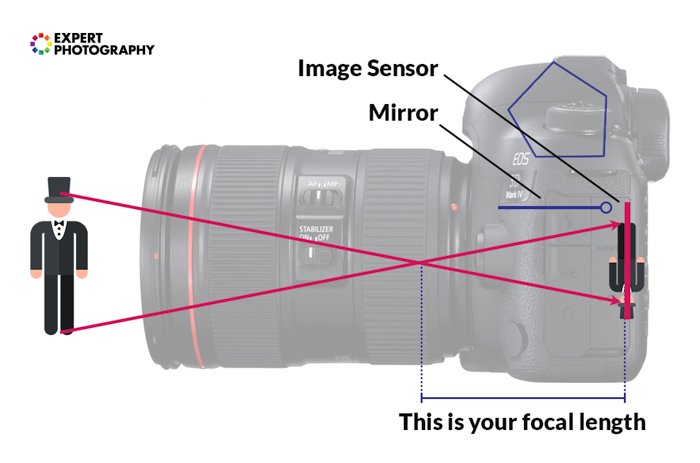
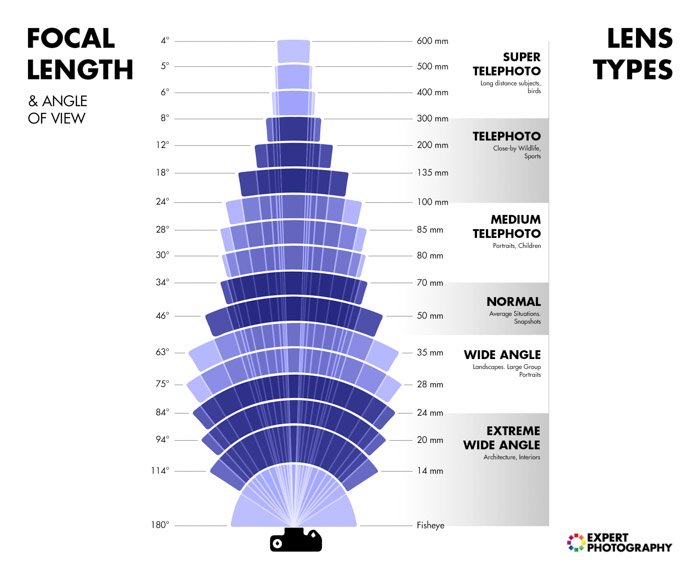
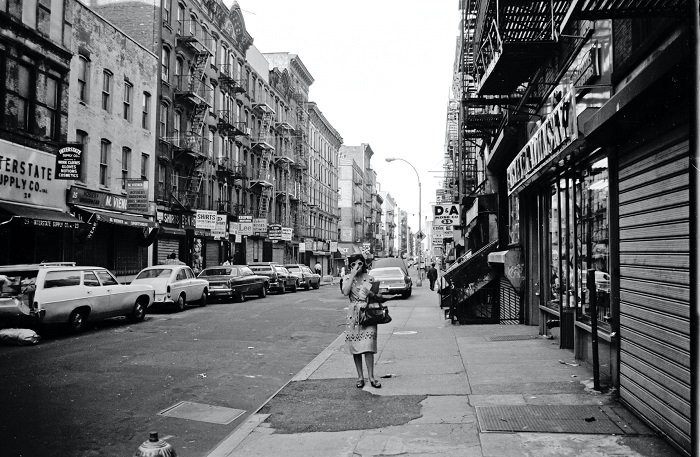
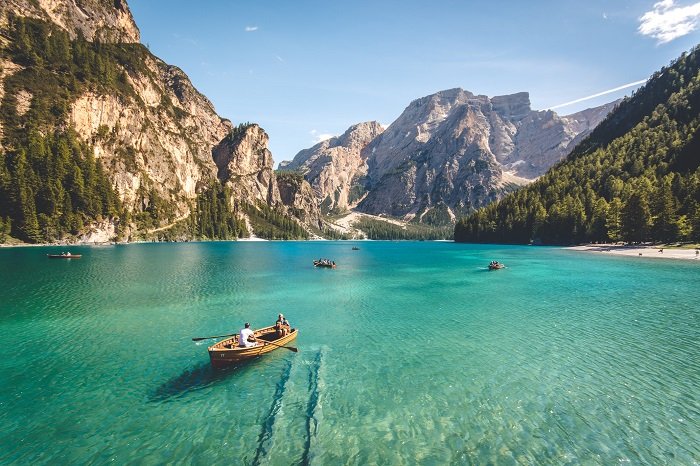
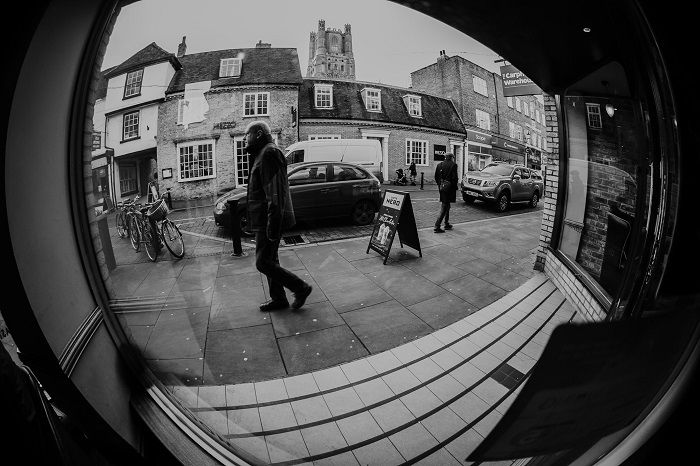
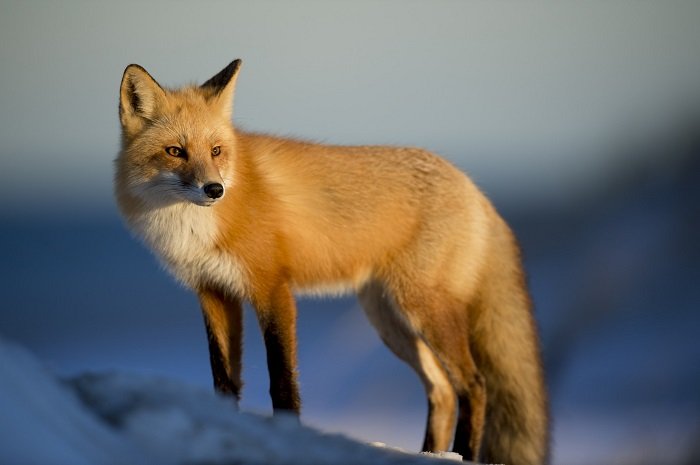
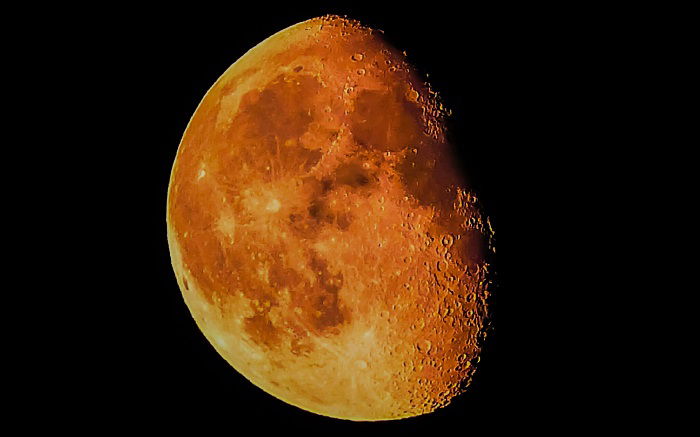
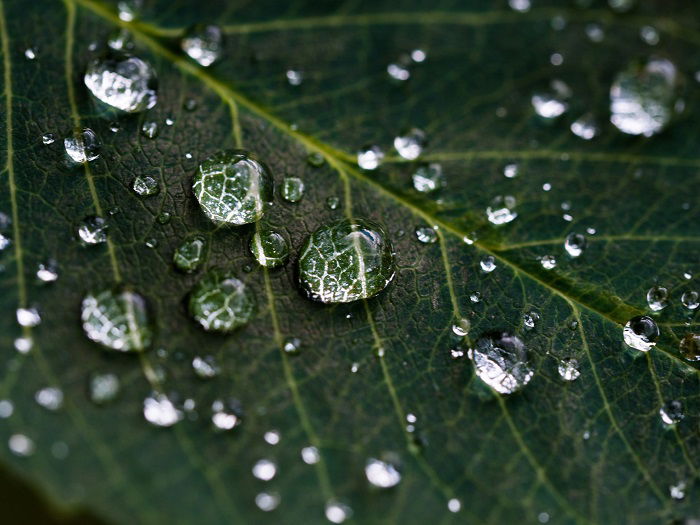



title: “A Full List Of Camera Lens Types And When To Use Each” ShowToc: true date: “2023-02-18” author: “Georgina Hillian”
Here at Expert Photography, we know how essential lenses are to photography. So to help you get started, we’re going to take a look at the different types of camera lenses. We’ll show you which types of lenses are available and how to use them. [ExpertPhotography is supported by readers. Product links on ExpertPhotography are referral links. If you use one of these and buy something, we make a little bit of money. Need more info? See how it all works here.]
The Basics of All Lens Types
Photography is all about light. The camera needs the light from the scene to make an image. And the camera lens channels the light in the right direction, bringing it to the film strip or digital sensor. The camera lens directs the light and determines how much passes through. This is partly done through the aperture setting. But also, the different types of lenses have a wider or narrower field of view. It means they see more or less of the scene in front of you. The glass elements direct the light to a single point in front of the camera sensor or film. This is called the focal point. And from the focal point, we can determine the lens’s focal length. The focal length is the distance between the focal point and the sensor. For a 50mm prime lens, the focal point is 50mm in front of the sensor. The focal length helps us categorize lens types. A shorter focal length, like 28mm, gives us a wide angle of view. A higher number, such as 200mm, gives us a narrower angle of view but greater magnification.
Prime and Zoom Lenses
Prime and zoom are both umbrella categories for lenses. The prime or zoom label denotes how the lens functions rather than what lens it is. A prime lens has a fixed focal length. They have fewer moving parts than zoom lenses, making them lighter and cheaper. And prime lenses often have a wider maximum aperture. The downside is that they’re less versatile and you might have to change lenses more often. A zoom lens has a focal length that can vary between a particular range. With an 18-55mm zoom lens, the focal point can be moved anywhere within that range. The higher the number, the further you can zoom. Zoom lenses are more versatile than primes. They give you more control over the shot without moving your vantage point. But zoom lenses are heavier and sometimes have smaller maximum apertures. And they’re usually more expensive.
The Different Lens Types
Now we’ll look at the different types of camera lenses you’ll come across in photography. We’ll see what makes each lens type unique. And we’ll find out how and why photographers choose these different lenses.
Standard Lenses
A standard lens has a focal length between 35mm and 85mm. They’re called standard or normal lenses because they give a field of view similar to the human eye. When we look through the viewfinder of a camera with a standard lens attached, it’s similar to our normal vision. Prime and zoom standard lenses are both common. The natural field of vision makes the standard lens a popular choice for many photographers. Standard lenses are common among street photographers, travel photographers, and photojournalists. These characteristics also make them a suitable lens type for portrait photography. You can use a standard lens for close-up and intimate portraits. Or you can go for full-body fashion photography. A 50mm prime lens is often called a nifty-fifty. It gets its nickname from being one of the more versatile and reliable lens types. They’re popular in many areas of photography. This is also why they’re one of the most common lenses you’ll find.
Wide-Angle Lenses
The focal length of a wide-angle lens is between 14mm and 35mm. They give a wide field of vision, with a more broad scope from side to side. It’s more panoramic than a standard lens, similar to widescreen in cinematography. Wide-angle lenses are essential for serious landscape photographers. This is because the wide angle captures large and spacious scenes. The wide angle stretches the horizon, allowing your camera to view more of the landscape. A wide-angle lens is also vital equipment for architecture and real estate photographers. For exterior property photography, they allow you to capture the whole building without moving further and further away. This is equally valuable with interior real estate photography. You can photograph entire rooms from the inside.
Ultra-Wide-Angle / Fisheye Lenses
A lens with a focal length of less than 14mm is called an ultra-wide-angle lens. The field of vision is so wide the picture is bent and curved around the edges. This effect gives it the name of the fisheye lens because it’s like looking through the eye of a fish. Ultra-wide-angle lenses offer an enormous field of view. But the warping effect means fisheye lenses have a limited appeal with photographers. They’re mainly used for the visual effect in fine art photography. But they are often used in extreme sports like skateboarding and surfing.
Telephoto Lenses
A telephoto lens has an incredible level of magnification. They contain many glass elements, which work much like a telescope. A telephoto lens allows the photographer to get close shots of faraway subjects. There are two subcategories for telephoto lenses. There are short telephotos, with focal lengths between 85 and 135mm. Then you have the standard telephoto lenses, which have a focal length between 135 and 300mm. A telephoto lens gives you excellent magnification, allowing you to shoot far-away objects. But the angle of view is very narrow. And a telephoto zoom lens will have a small maximum aperture. The magnification quality of a telephoto lens makes them popular with sports and wildlife photographers. A sports photographer can capture action shots without venturing onto the pitch. And wildlife photographers can get intimate images of animals in the wild without scaring them or getting in harm’s way.
Super-Telephoto Lenses
A super-telephoto lens has an even greater level of magnification than a standard telephoto. The focal length of a super-telephoto lens is anything above 300mm. They’re big, heavy, expensive pieces of equipment. You won’t be buying one of these on a whim. But they’re excellent pieces of kit with incredible ingenuity. They have upwards of 10 precisely crafted glass elements. Like the short and standard telephoto lenses, you’ll find them in the kit bags of sports and wildlife photographers. And their telescopic abilities make them ideal for astrophotography. You can capture incredible details of galaxies and nebulae in the night sky.
Macro Lenses
While telephoto lenses work like a telescope, macro lenses work like a microscope. They allow you to take pictures of things at very close range. You can capture tiny objects with a small minimum focus range. Unlike the other camera lenses, you can’t categorize a macro lens by the focal length alone. They can have anything between 35mm and 200mm. The macro lens is defined by the ability to focus at a very close range. Macro lenses are used for extreme close-ups and shots with tiny subjects. They don’t have a wide application, making them a specialist piece of gear. They can be used for portraits, giving an excellent bokeh effect. But this camera lens is mainly used for shooting very small subjects.
Tilt-Shift Lenses
Tilt-shift lenses allow you to distort and change the perspective of the shot. You can tilt and shift the lens’s optics in relation to the camera sensor, which manipulates the focal plane. Tilting the lens gives greater control over the depth of field. It allows you near-infinite depth at the greater end or pin-point focus point at the narrow end. Shifting the lens controls perspective. This makes tilt-shift lenses ideal for architectural photography when shooting tall buildings. They can make it appear if the building is leaning over or ensure the vertical lines stay vertical. The perspective control also gives you excellent creative options. For example, you can use a tilt-shift lens when shooting with mirrors. You can take the shot from the side of the mirror but change the perspective so that it looks like it was taken directly in front without the camera in the photo. Tilt-shift lenses are sophisticated pieces of equipment. And they don’t come cheap. But they are excellent for visual effects and for capturing otherwise impossible shots. Many architecture and real estate photographers swear by them.
Conclusion
Camera lenses can seem like a confusing topic. It’s easy to get lost in the jargon and specifications. But once you break down the different lens types, it all comes into focus. There are prime lenses and zoom lenses. And within those categories, you have standard, wide-angle, and telephoto. For more niche areas of photography, there are super-telephoto, tilt-shift, and macro lenses. And if the names don’t stick, you can often find what you need with the focal length. I hope you’re now ready to dive further into the world of camera lenses. It’s a vital area of photography. And once you get to grips with your camera lens, your photography will only improve. Check out our Photography for Beginners course to take amazing photos no matter what lens you use!












